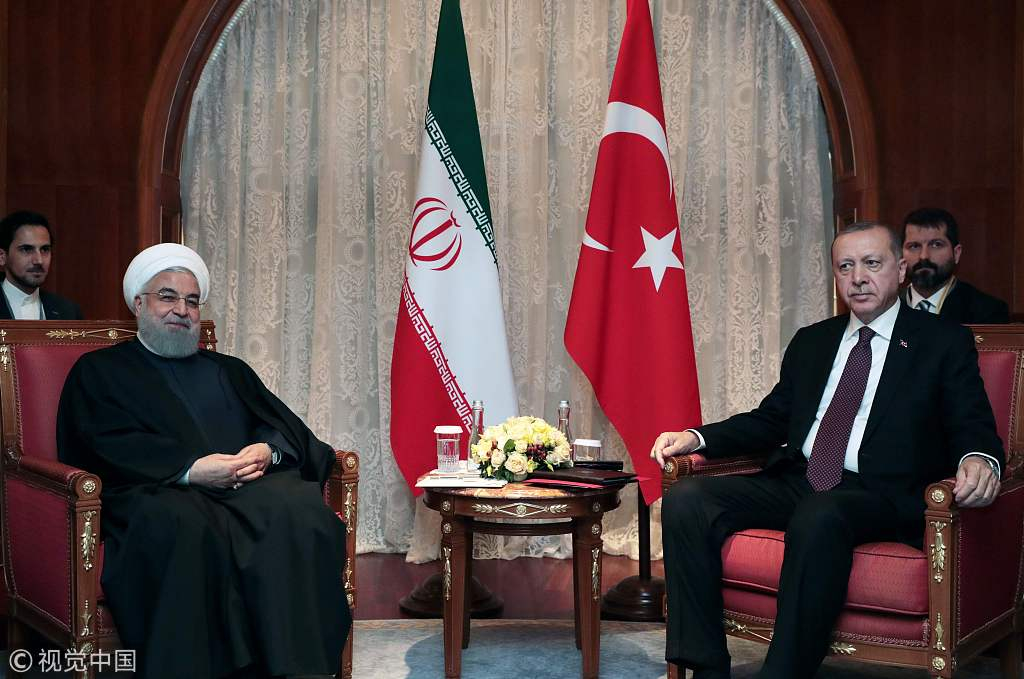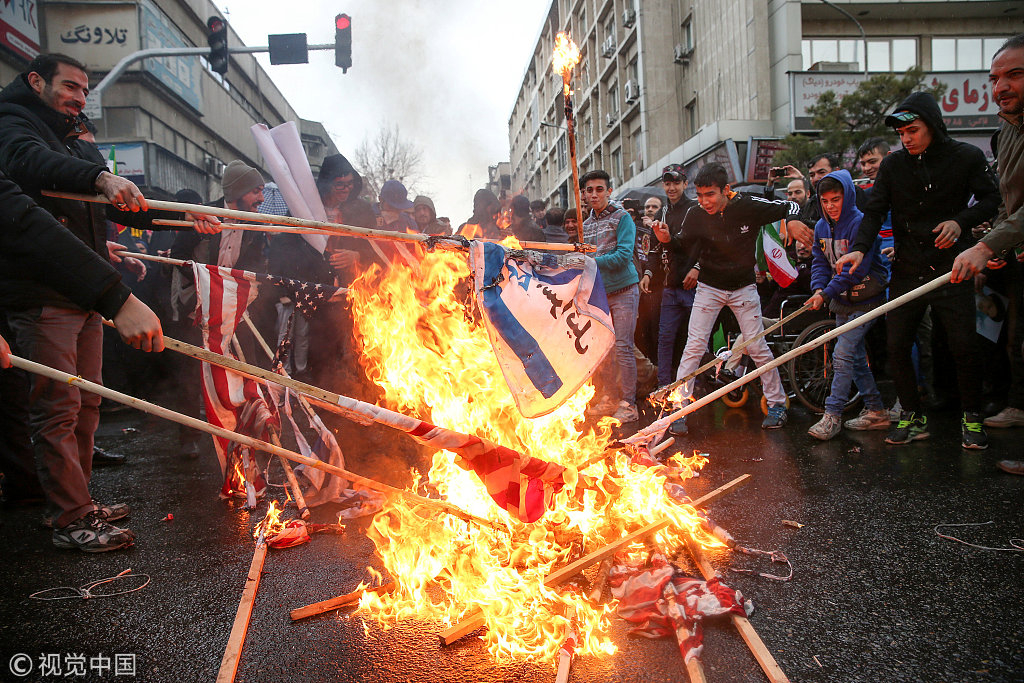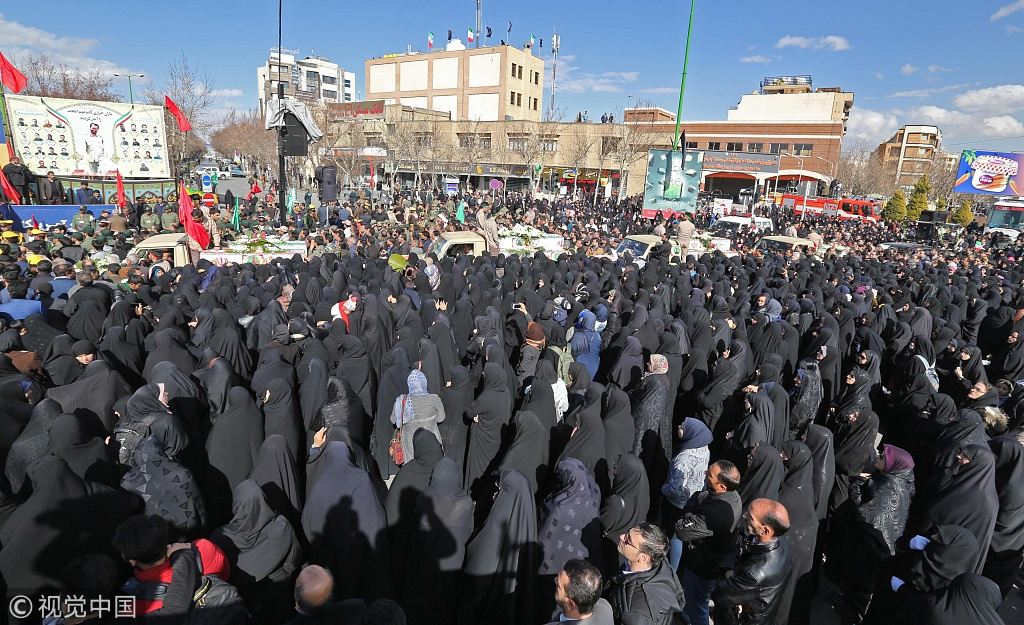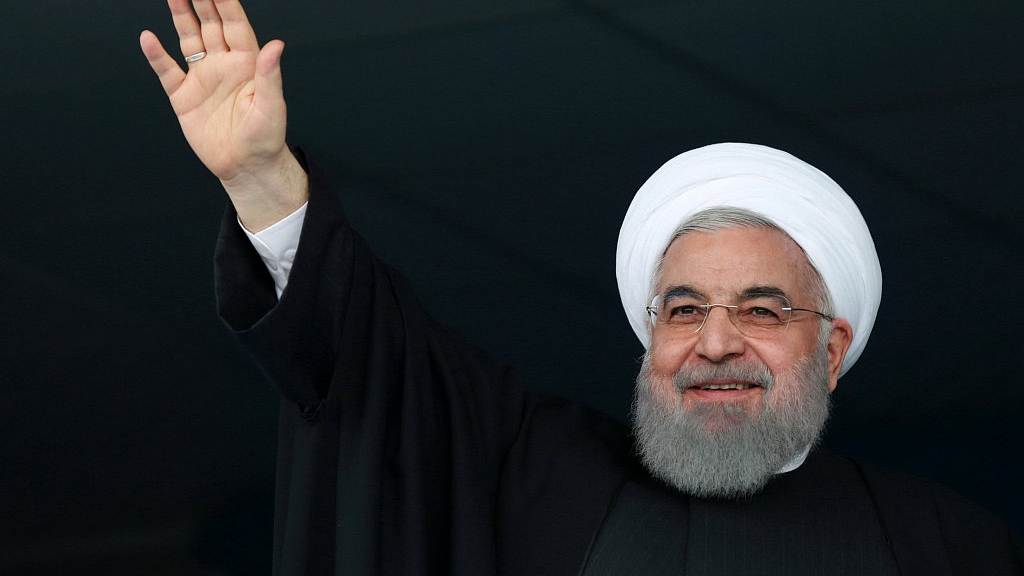Editor's note: Javier Solana is currently president of the ESADE Center for Global Economy and Geopolitics, distinguished fellow at the Brookings Institution and a member of the World Economic Forum's Global Agenda Council on Europe. The article reflects the author's opinion, and not necessarily the views of CGTN.
In 1971, world leaders as varied as Yugoslav President Josip Broz Tito, Prince Rainier and Princess Grace of Monaco, U.S. Vice President Spiro Agnew, and Soviet statesman Nikolai Podgorny gathered in the Iranian city of Persepolis, the ancient capital of the First Persian Empire. They were there to attend a sumptuous party, hosted by Shah Reza Pahlavi, to mark 2,500 years since the founding of the Imperial State of Iran. But less than eight years later, Iran had a new leader, Ayatollah Ruhollah Khomeini, who referred to this gathering as “the devil's festival.”
Before the 1979 Islamic Revolution, Khomeini had been living in exile (in Turkey, Iraq, and finally in Paris), owing to his denunciation of Iran's westernization and dependence on the United States under Shah Pahlavi. In 1953, the U.S. and the United Kingdom had propped up Pahlavi by ousting the country's democratically elected Prime Minister, Mohammad Mosaddegh, who had nationalized Iran's oil industry and had sought to reduce the Shah's powers.

A handout picture taken and released on February 14 , 2019, by the Turkish Presidential press service shows Turkish President Recep Tayyip Erdogan (R) and Iranian President Hassan Rouhani (L) sitting during their meeting on the sidelines of a trilateral meeting between Russia, Turkey and Iran for talks on Syria at the Black Sea resort of Sochi. Moscow. /VCG Photo.
A handout picture taken and released on February 14 , 2019, by the Turkish Presidential press service shows Turkish President Recep Tayyip Erdogan (R) and Iranian President Hassan Rouhani (L) sitting during their meeting on the sidelines of a trilateral meeting between Russia, Turkey and Iran for talks on Syria at the Black Sea resort of Sochi. Moscow. /VCG Photo.
That fateful episode – imbued with the logic of the Cold War – marked the first U.S. operation to depose a foreign leader during peacetime. But it certainly wasn't the last. Ever since, U.S. foreign policy has been characterized by a steady procession of “regime changes,” which have poisoned Washington's relations with key regions of the world – perhaps most notably with the Middle East.
In the case of Iran, the 1953 coup eroded the Shah's domestic legitimacy and, along with his repressive temperament and insensitivity to demands for greater social justice, planted the seeds of the 1979 Revolution. Throughout the ensuing 40 years, Iran and the West have been estranged, to say the least.
The philosopher Hannah Arendt once quipped that “the most radical revolutionary will become a conservative on the day after the revolution.” That was certainly true of Khomeini. After taking power by uniting forces adhering to vastly different ideologies, Khomeini's flexibility suddenly evaporated. He distanced himself completely from leftist movements, accused his opponents of subversion, and repressed liberal voices with abandon, triggering four decades of tension between the Islamic Republic's theocratic and democratic elements.
In the immediate aftermath of the revolution, U.S.-Iranian diplomatic relations imploded. After laying siege to the U.S. embassy in Tehran, a group of Iranian students, with Khomeini's connivance, held 52 Americans hostage for 444 days. They demanded that U.S. President Jimmy Carter's administration extradite the Shah, who as in New York for cancer treatment. In the end, the hostages were not released until minutes after Ronald Reagan was sworn in as successor to Carter. By then, Pahlavi had died in Egypt, and Khomeini had consolidated the power of hardline theocrats over the revolution's more secular factions.

Iranians burn U.S. flags during a ceremony to mark the 40th anniversary of the Islamic Revolution in Tehran, Iran February 11, 2019. /VCG Photo.
Iranians burn U.S. flags during a ceremony to mark the 40th anniversary of the Islamic Revolution in Tehran, Iran February 11, 2019. /VCG Photo.
On top of it all, Saddam Hussein's Iraq invaded Iran in 1980, unleashing a bloody eight-year war. The conflict, in which the US and even the Soviet Union aided Saddam, ended in a stalemate. Around a half-million Iranians and Iraqis died, but Iran, having been subjected to Iraqi chemical-weapons attacks, bore most of the long-term physical and psychological consequences.
It was during these years that Iran began exploring the possibility of developing nuclear weapons, by building on the nuclear-energy technology that the U.S. had previously furnished to the Shah as part of the Eisenhower administration's “Atoms for Peace” initiative.
Iran's clandestine nuclear program did not come to light until 2002. By then, the current Supreme Leader, Ali Khamenei, was already in charge, and the geopolitical chessboard had changed dramatically. The U.S. had not only turned its back on Saddam, but was preparing to invade Iraq. Ironically, that ruinous decision would end up yielding significant strategic benefits for Iran, despite the country's inclusion in U.S. President George W. Bush's notorious “axis of evil.”
At this point, it fell to me as the EU's High Representative for the Common Foreign and Security Policy to initiate nuclear negotiations with Iran. My first interlocutor was Hassan Rouhani, who now serves as Iran's president, and with whom we reached a preliminary understanding.

Iranian mourners attend the funeral of 27 Revolutionary Guards, who were killed in a suicide attack, in the southeastern city of Isfahan on February 16, 2019. /VCG Photo.
Iranian mourners attend the funeral of 27 Revolutionary Guards, who were killed in a suicide attack, in the southeastern city of Isfahan on February 16, 2019. /VCG Photo.
But Mahmoud Ahmadinejad's election to the presidency in 2005 set the process back by years, and the chasm widened further when Saeed Jalili took the reins of the negotiations. Jalili would consistently begin our meetings by reminding me that he had lost part of his leg during the Iran-Iraq War, for which he blamed the West.
When Rouhani returned to the scene as Iran's newly elected president in 2013, the international community demonstrated the cohesion and skill needed to take advantage of the opportunity. The result was the 2015 Joint Comprehensive Plan of Action (JCPOA), a diplomatic milestone that ushered in a respite from decades of unproductive hostility.
But then came the election of President Donald Trump, who decided unilaterally last year to cease implementing the JCPOA. The Trump administration has imposed new sanctions on Iran, and is abusing the U.S. dollar's dominant position in global trade by threatening foreign companies with secondary sanctions if they continue to do business with the Islamic Republic.
At a recent U.S.-sponsored conference in Warsaw, the Trump administration fruitlessly sought to divide Europe, and to expand the anti-Iran coalition that it leads together with Israel, Saudi Arabia, and the United Arab Emirates. Yet, for all of the domestic difficulties faced by the Iranian regime, precipitating its collapse is no more realistic now than it was at any other point during the past 40 years.
Instead of antagonizing Iran and lending credibility to its hardliners, the West should be seeking a more inclusive formula for addressing regional threats. Whereas decades of hostility with Iran yielded nothing, the recent period of engagement and negotiation resulted in a historic nuclear accord. It should be obvious which approach is more effective.
Copyright:
Project Syndicate, 2019.
(If you want to contribute and have specific expertise, please contact us at opinions@cgtn.com.)





